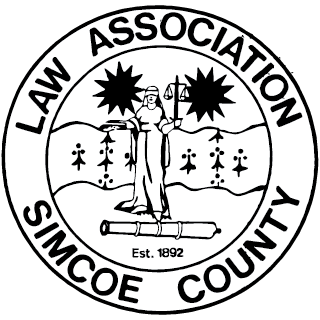Part Two of Spousal Support Issues
This is the second of two blog posts on the Spousal Support Advisory Guidelines (“SSAGs”), their applications and shortcomings. Today, I comment on the use and abuse of the SSAGs in cases of payors in Ontario who earn more than $350,000 per year.
Part II: High Income Earners
The SSAG drafters established a “ceiling” of a gross annual income for the payor of $350,000 in terms of the income level to which they properly apply. That does not mean that spousal support maxes out at that level, such that there is no spousal support payable on the income that exceeds $350,000. It is simply that the further away from the $350,000 number you get, the less likely it is that the SSAGs will produce a reasonable result. Case law reveals that the closer the income is to $350,000, the more likely the SSAGs will be applied. Incomes of $350,000 a year and higher do not automatically bar the use of the SSAG formulas as a means of arriving at a spousal support award. But the further away from $350,000 the income number is, the less relevant the SSAGS are. Income of $350,000 is simply the level at which caution must be exercised when using the SSAGs, since the numbers at high income levels do, at a certain point, become ridiculous. Further complicating the application of the SSAGs at the higher income levels is the presence or absence of children.
Without children, the SSAGs call for sharing of up to 50% of the total net disposable income of the family (“NDI”), whether the payor earns $350,000 or more. That is, the range is limited at the higher end to an equal splitting or 50/50 NDI. For example, in the case of a 30 year marriage, where the children are financially independent (hence no child support) and the recipient earns no income, whether the payor spouse earns an annual income of $375,000, $650,000 or even $3,000,000, the SSAGs call for a maximum allocation between the spouses of 50/50.
In the case of a family with children, however, the application of the SSAGs to incomes numbers over $350,000 often result in the recipient spouse receiving more than 50% of the NDI. This is due to the fact that, as the payor’s income increases, the child support payment increases as well. As such, the percentages thrown off by the SSAGs increase such that the recipient can end up with far more than 50% of the family’s NDI when child support and spousal support are paid. Consider the same example as above: a marriage of 30 years, but now there are two children still living with the recipient spouse who earns no income.
If the payor:
a) Earns $375,000:
Child support is $54,924 (not taxable to recipient, not deductible to payor)
Spousal support paid to result in recipient having 53.7% to 58.3% of NDI
b) Earns $650,000:
Child support is $92,544 (not taxable to recipient, not deductible to payor)
Spousal support paid to result in recipient having 54.3% to 58.9% of NDI
c) Earns $3,000,000:
Child support is (not taxable to recipient, not deductible to payor)
Spousal support paid to result in recipient having 55.1% to 59.6% of NDI
To address the problem of the “with child” formula and SSAGs misapplication on income numbers over $350,000, the drafters of the SSAGs have proposed two approaches:
Minimum Plus: Calculate the spousal support payable under the SSAGs at $350,000, which would be the minimum spousal support range. Then, use discretion to add to that minimum amount for incomes over $350,000, considering the actual amount of child support being paid. Pure Discretion: Once the payor’s income exceeds $350,000, there is no minimum or maximum, simply a calculation of a spousal support amount that takes the actual amount of child support being paid into account. At some point, the large child support awards include some compensation for the indirect costs of child-care responsibilities, thereby leaving less need for the spousal support award to do so. This approach becomes more relevant the higher the payor’s income and child support payment.
In either “with child” case, the support recipient’s budget is crucial to the award of spousal support. The intention of the SSAGs was to do away with awards of spousal support on a case by case basis based largely on budget. The plan was to avoid needs and means and, instead, to award support on an income sharing model. However, in the case of incomes over $3500,000, we seem to be right back where we started in the land of budgets. (Do you still call it a budget when the numbers are stratospheric? When does it become a “lifestyle plan”?) Each spousal support award for incomes over $350,000 is made on an individualized, fact specific basis. See for example, Czutrin J.’s analysis of the minutiae of the Wife’s budget in the 2010 case of Pollitt, where His Honour even delves into the numbers the Wife has allocated for alcohol and tobacco, pet expenses and replacing broadloom before fixing a spousal support amount. Since judges are clearly looking at every gruesome detail, you need to be very careful to marshal the evidence required to either support or disprove a budget.













